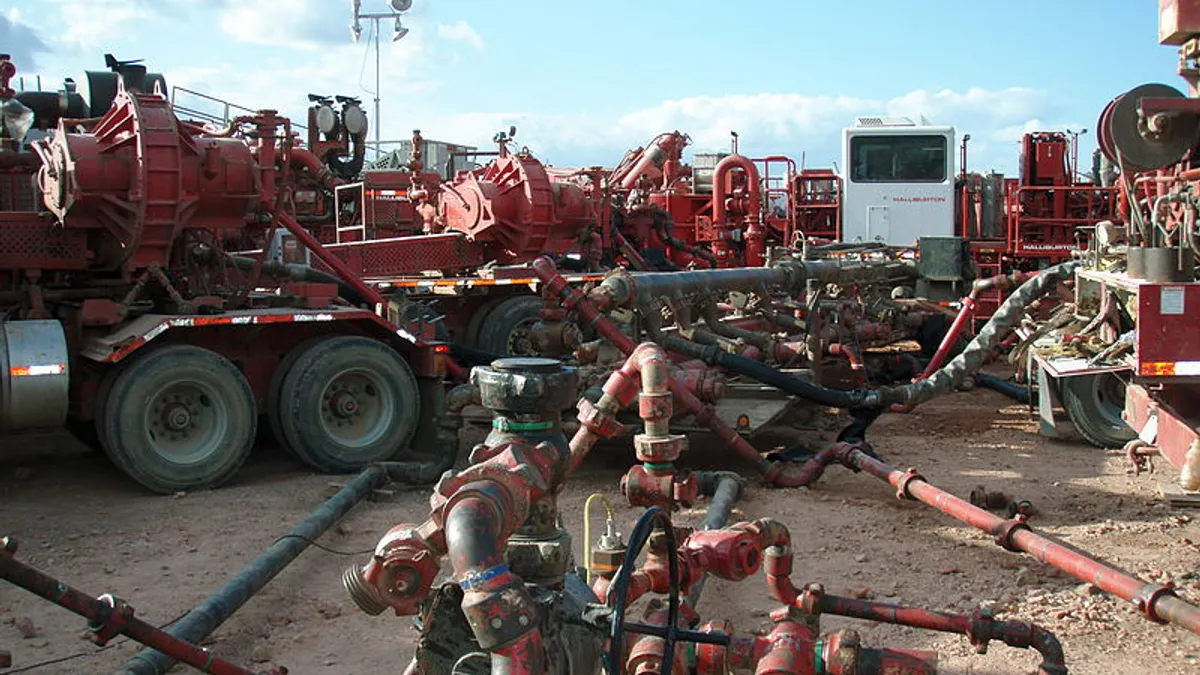Dive Brief:
- The Michigan Department of Environmental Quality announced in July its intention to allow the US Ecology plant on Detroit's border with Hamtramck to increase hazardous waste storage from 64,000 gallons to 666,000 gallons.
- The plant takes hazardous and non-hazardous, solid and liquid wastes from the auto, steel, plating and other industries, as well as very low-level radioactive byproducts primarily from hydraulic fracturing, or "fracking," a technique for extracting natural gas and oil from deep underground.
- There are homes, a playground, two schools and several churches within 1.5 miles of the plant.
Dive Insight:
Waste at the plant is treated to remove or stabilize its hazards according to state and federal regulations, then shipped for disposal at offsite landfills. Liquids are treated until they are safe to dispose of via the Detroit wastewater treatment plant, CBS Detroit reported.
"The processes we employ at the facility present virtually no risk of groundwater or soil contamination," US Ecology spokesman David Crumrine said in an email to the Detroit Free Press.
But not everyone is convinced. Ed McArdle of the nonprofit Sierra Club’s Southeast Michigan group, said: "These are the worst, nightmare chemicals of American industry. This should be in some isolated place; not in the middle of a city like this." Sierra Club also pointed out to the Detroit Free Press studies that show communities with hazardous waste facilities tend to have poor, minority — particularly African-American — populations.
In January, US Ecology unified its operations under a redesigned brand, with the aim of conveying its position in the marketplace "as a premier provider of environmental solutions to customers across North America."














